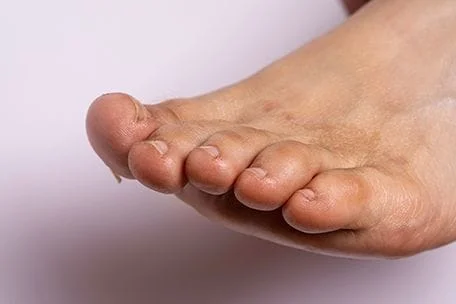
What are Sweaty Feet?
Hyperhidrosis is excessive sweating of the feet. It may also be known as plantar hyperhidrosis. Excess sweating is brought upon by an overactive sympathetic nervous system, which causes overstimulation of the sweat glands. Patients with sweaty feet also experience sweaty palms, known as palmar hyperhidrosis, as well as excessively sweaty armpits, known as axillary hyperhidrosis.
Excessive sweating affects anywhere from 1% to 3% of the US population, with Asian Americans being more predisposed to being diagnosed with excessively sweaty feet.
What Are the Causes of Sweaty Feet?
Most cases of sweaty feet have no known cause. However, patients with a family history of hyperhidrosis may be more likely to develop sweaty feet.
Sweaty feet that are caused by another illness is known as secondary hyperhidrosis. You may also be at risk for developing sweaty feet if you have:
- an overactive thyroid
- low blood sugar
- used certain medications
- nervous system disorder
- stress and anxiety
- cancer
- heart disease
- Parkinson's
- Menopause
What Are the Symptoms of Sweaty Feet?
The main symptom of sweaty feet is excess wetness on the soles of your feet. This can affect how you walk and prevent you from wearing flip flops or shoes that make your feet slip more while you sweat. Other symptoms of hyperhidrosis include:
- cold and clammy hands and feet
- whitish appearance of the feet
- cracked and scaly skin that is also soft
- foot odor due to a buildup of yeast or bacteria on wet skin, especially between the toes
What to Expect During Treatment
Sweaty feet can be officially diagnosed at the podiatrist, who can also determine whether your excessive sweating is due to primary hyperhidrosis or as a result of an underlying medical condition. A complete medical history, as well as lifestyle, diet, and current medications, are essential to an accurate diagnosis. Your podiatrist may also use the following tests to confirm hyperhidrosis:
- thorough foot exam
- Starch-iodine test—a solution of iodine is applied to the soles of your feet. When it dries, starch is sprinkled over them, and areas turn dark blue or black to indicate the presence of excess sweat.
- thermoregulatory sweat test
- skin conductance
- blood test and other imaging tests—to rule out underlying conditions that may be causing secondary hyperhidrosis
Treatment depends on your diagnosis and the severity of sweating. It can include:
- botox—for excessive hyperhidrosis and can last up to 10 months
- topical antiperspirants—those with aluminum salts work best
- iontophoresis—uses mild electric currents to block sweat glands temporarily
- oral anticholinergic medications
- thorascopic sympathectomy—surgery that's only an option in very severe cases and offers permanent relief from hyperhidrosis
